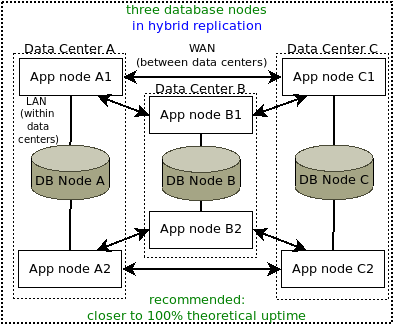Terminology
Latency The time it takes for a data packet to be transmitted from one physical server to another over the network.
Bandwidth The maximum number of bits per second that can be transmitted from one physical server to another over the network.
Local area network A set of connections between servers where the worst-case latency is low (for example, less than 10ms) and the worst-case bandwidth is high (for example, over 100Mbps).
Wide area network A set of connections between servers where the best-case latency is high (for example, more than 50ms) and the best-case bandwidth is low (for example, under 10Mbps).
Application This is a reference to the Bravura Security Fabric application being deployed, being one of:
Bravura Identity
Bravura Privilege
Bravura Pass
Instance A single running copy of the Bravura Security Fabric application, or all copies of the application running under the same instance name and linked through replication (a replicated instance).
Server A physical or virtual server running the Windows 2012 or 2016 operating system on which at least one application instance and/or a MSSQL database server is installed.
Application node A single physical or virtual server housing at least one instance of the Bravura Security Fabric application.
Backend database A single instance of Microsoft SQL Server housing the internal data used by a single instance; this is recommended to be replicated between database nodes using data replication.
External database A couple of SQLite databases residing in the db\ directory of each application node and housing configuration data for the component framework; this can be changed only on the primary node and is replicated using file replication.
Logical schema A set of database objects (the description of tables, views, indexes, procedures, etc, but without their data) used as the back-end for one or more application nodes. It is specific to each version of Bravura Security Fabric . External databases also have their own, version-specific logical schemas. The same logical schema must be used for all replicated database nodes and for all instances used for developing and testing it.
Database node One or more application nodes using the same backend database, all hosted in the same data center, as close as possible to each other on the network (to reduce latency).
A single application instance may be distributed over multiple nodes, where the database nodes may be very far apart and have relatively low network bandwidth / high latency between them compared to connectivity between servers in the same database node.
